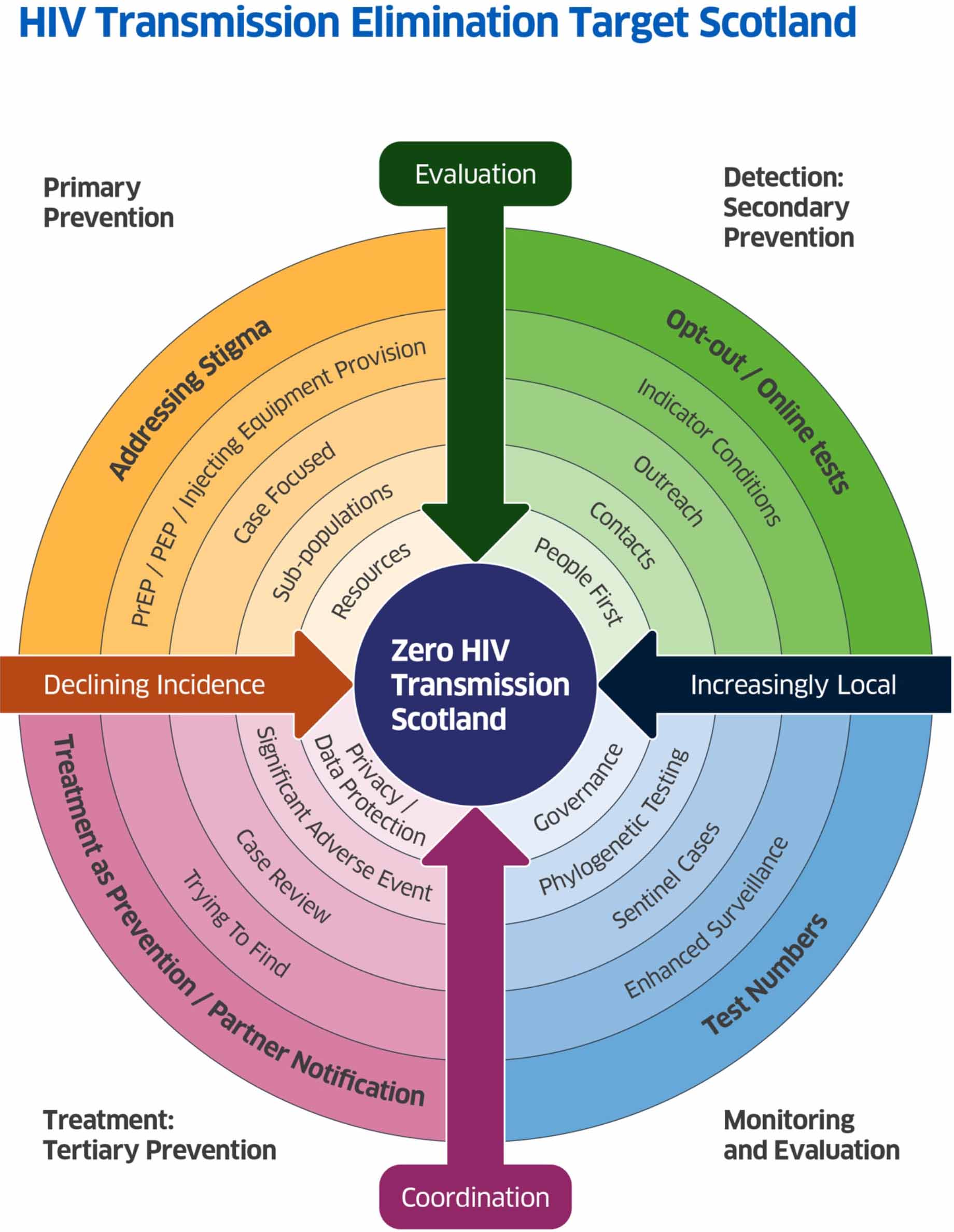Ending HIV Transmission in Scotland by 2030: HIV Transmission Elimination Delivery Plan 2023-26
A detailed delivery plan outlining prioritised actions for the elimination of HIV Transmission in Scotland by 2030.
Prioritisation
To ensure an effective approach that aligns with the realities of workforce capacity and finite resources there is a need to prioritise delivery of the 22 HiTEOG report recommendations by identifying short, medium and longer term actions. Prioritisation of the actions has been informed by a range of factors including anticipated new HIV transmissions averted by the intervention, known or anticipated limitations, interdependencies (in terms of the impact on other recommendations), speed and feasibility of implementation, and resource availability.
In order to achieve the 2030 goal, it is vital that we make rapid and sustained progress on our priority actions. Actions deemed ‘short term’ are being taken forward within the current financial year 2023/24 and indeed work towards many of these actions is already underway. Actions identified for medium term priority will commence in 2024/25 and longer term in 2025/26. A small number of actions which rely on other interdependencies have been identified to be taken forward in the longer term beyond 2025/26. The timelines outlined here relate to when the work will commence, however actions may be delivered over multiple years. Further detail is provided in the commencement and completion dates.
As well as prioritisation of each recommendation, this Delivery Plan identifies ownership, actions required, accountability, governance and performance management, data and monitoring and a timeline for delivery.
Timeline and review
The epidemiology of HIV in Scotland continues to change. Data from Public Health Scotland (PHS) shows relatively low numbers of new diagnoses and a reduction in the number of recently acquired infections among people newly diagnosed in 2022[v]. This suggests that there is a sustained reduction in new transmissions. Therefore, an approach that can adapt to a further reduction in prevalence is required. However, there is uncertainty regarding HIV epidemiology in the years to 2030 due to a range of global factors including the performance of global and national economies, climate change, migration pressures and immigration policy all of which may influence HIV epidemiology internationally and within Scotland.
In order to remain able to adapt to the changing epidemiological position we have laid out the first phase of the HIV transmission elimination up to March 2026. A review of progress will be required to follow on from the end of this Delivery Plan to identify further interventions and adjustments to achieve the 2030 vision.

Contact
Email: SHBBV@gov.scot
There is a problem
Thanks for your feedback